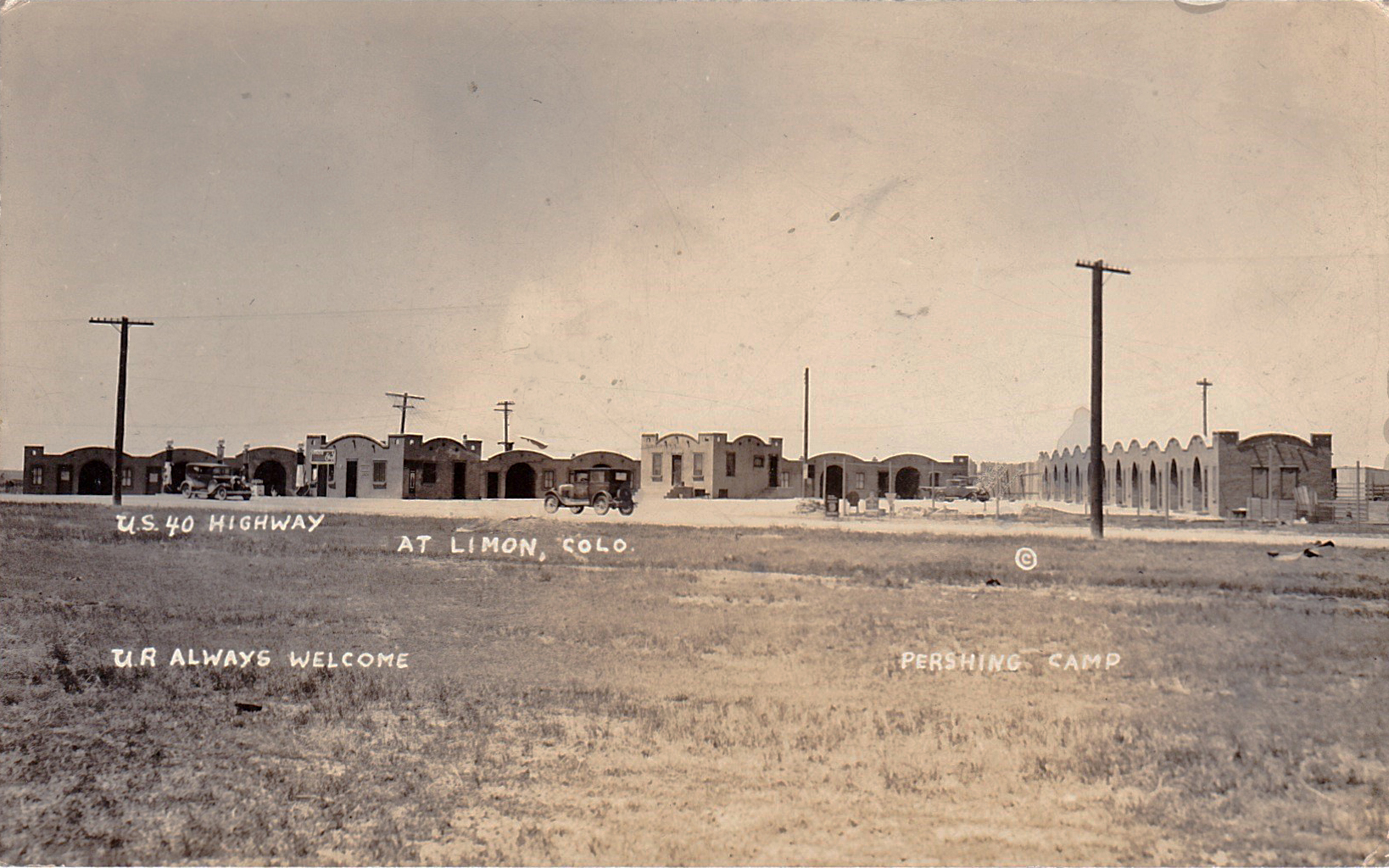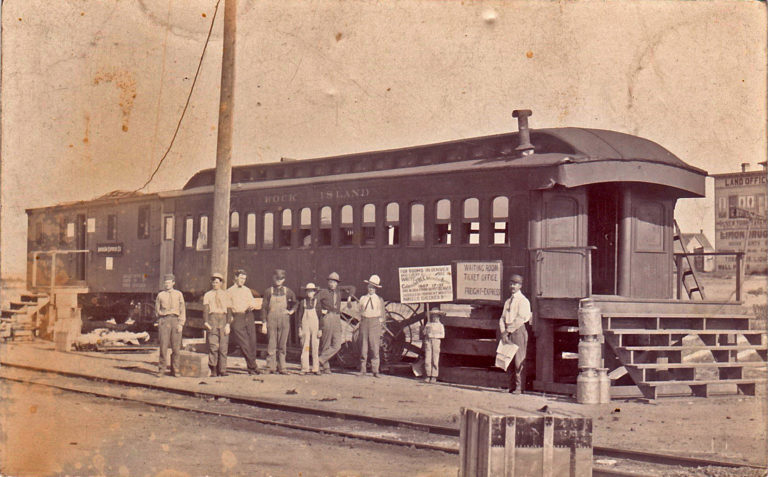The use of the term “camp” hearkens back to a time in the early twentieth when the increase in car ownership brought with it the desire on the part of more and more people to go “auto camping. ” This meant taking a road trip in the car, with tent and camping supplies stowed at the back. At the end of a day’s drive, one looked for an open place to set up camp, ideally somewhere fairly near the road. After a night’s stay, the camp would be taken down, the equipment re-stowed and the trip resumed. It provided freedom to gallivant at a low cost. Eventually, however, more and more people were drawn to the creature comforts afforded by individual cabins, which eventually were paired with the convenience of a small store and gas station. Pictured is such a place.
Note in the picture that the units are paired with covered car ports. Their arched entrances support the mission-style look of the place. Note the tops of the tall gas pumps behind the car at the far left.
The name of the place is most likely a reference to William S. Pershing, a surveyor and booster of Lincoln County, who sold land for the Union Pacific Railroad and became Limon’s first mayor. The town of Limon gets its name from John Limon, a Rock Island Line railroad construction foreman.
REFERENCES:
- “Americans on the Road – From Autocamp to Motel, 1910-1945,” by Warren James Belasco, 1981. Published by MIT Press.
- “Lincoln County,” Colorado Encyclopedia at https://coloradoencyclopedia.org/article/lincoln-county
- “The Rise and Fall of the Great American Motel,” by Andrew Wood, June 30, 2017, Smithsonian.com at https://www.smithsonianmag.com/history/twilight-mom-and-pop-motel-180963895/


